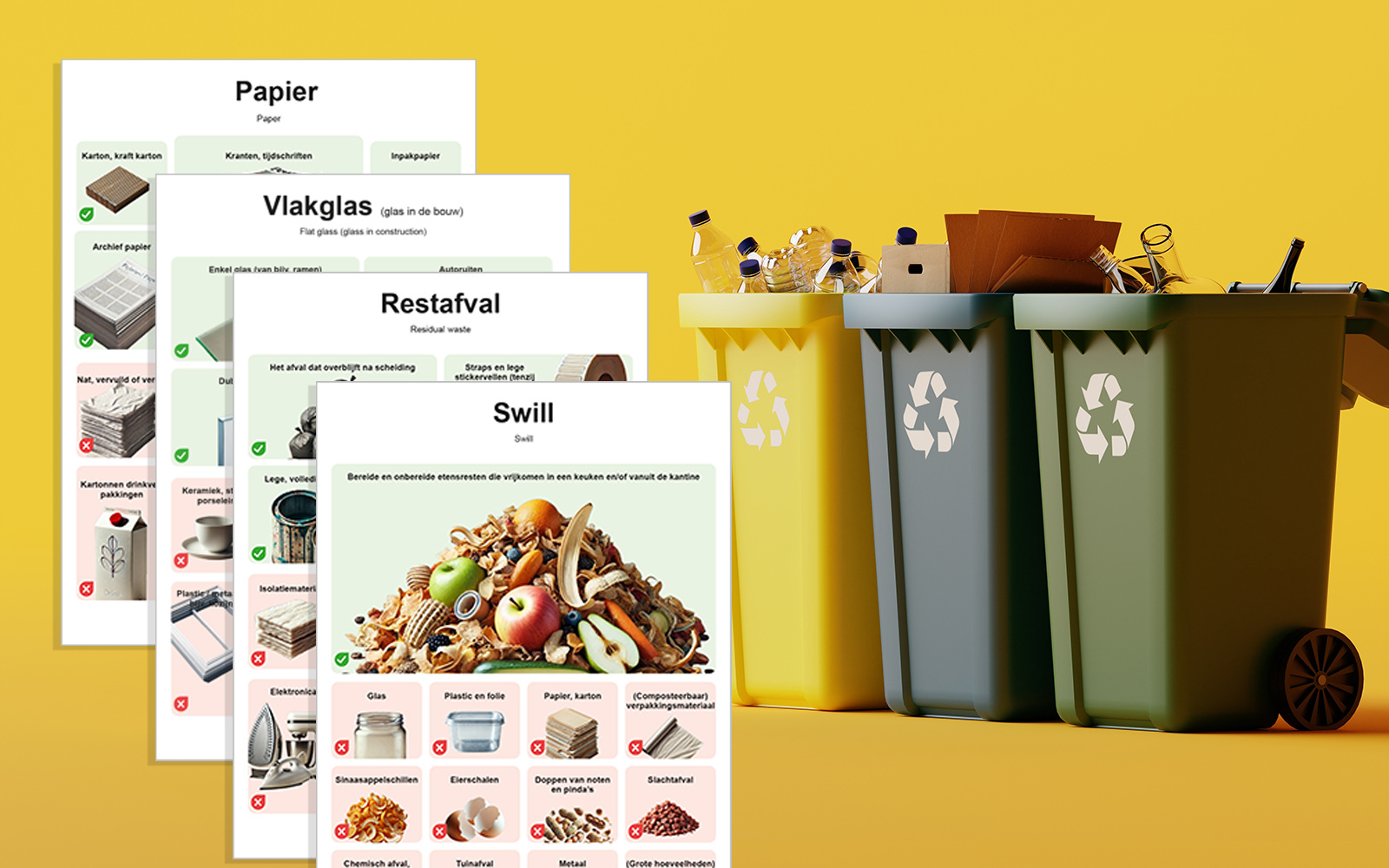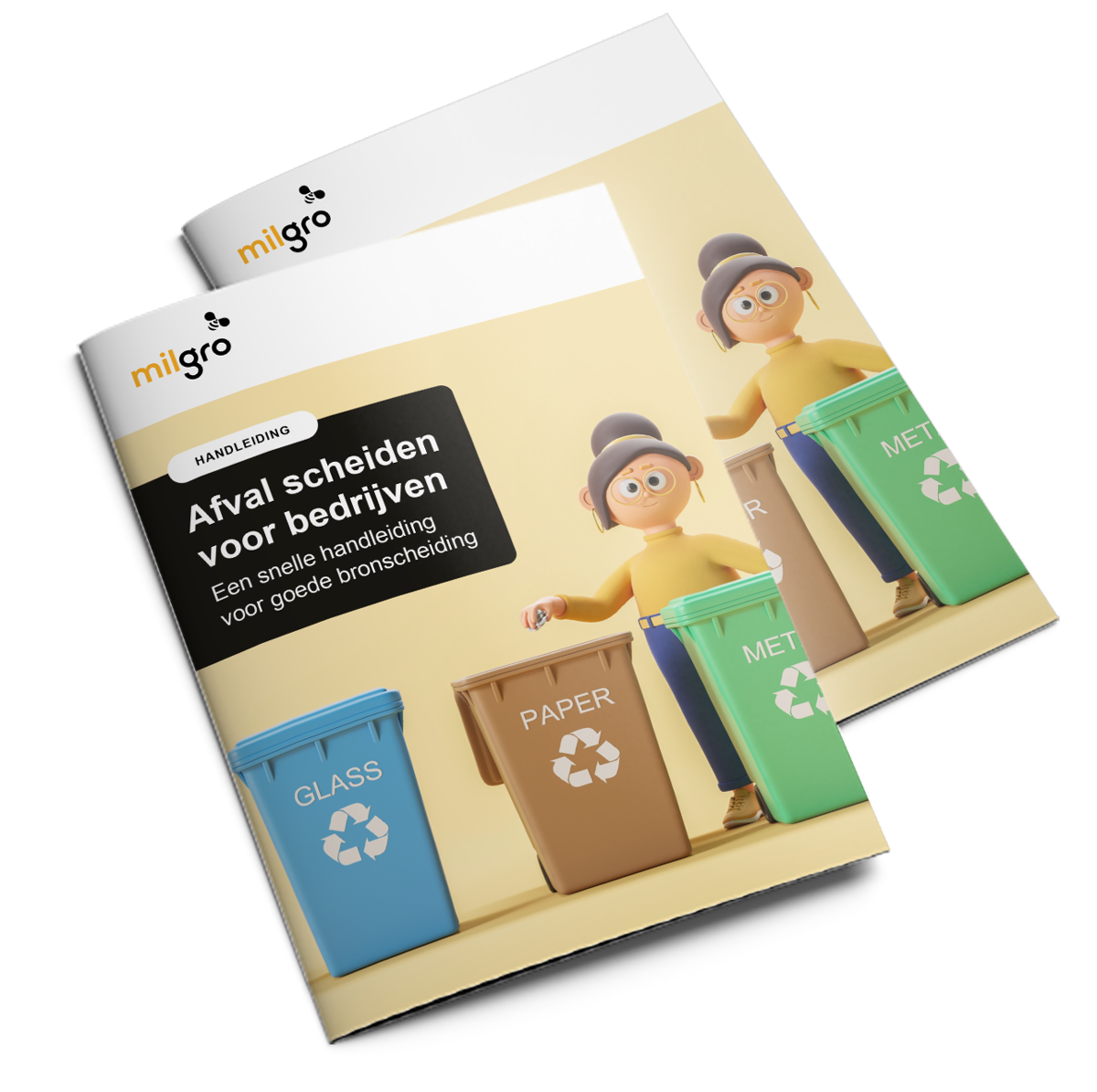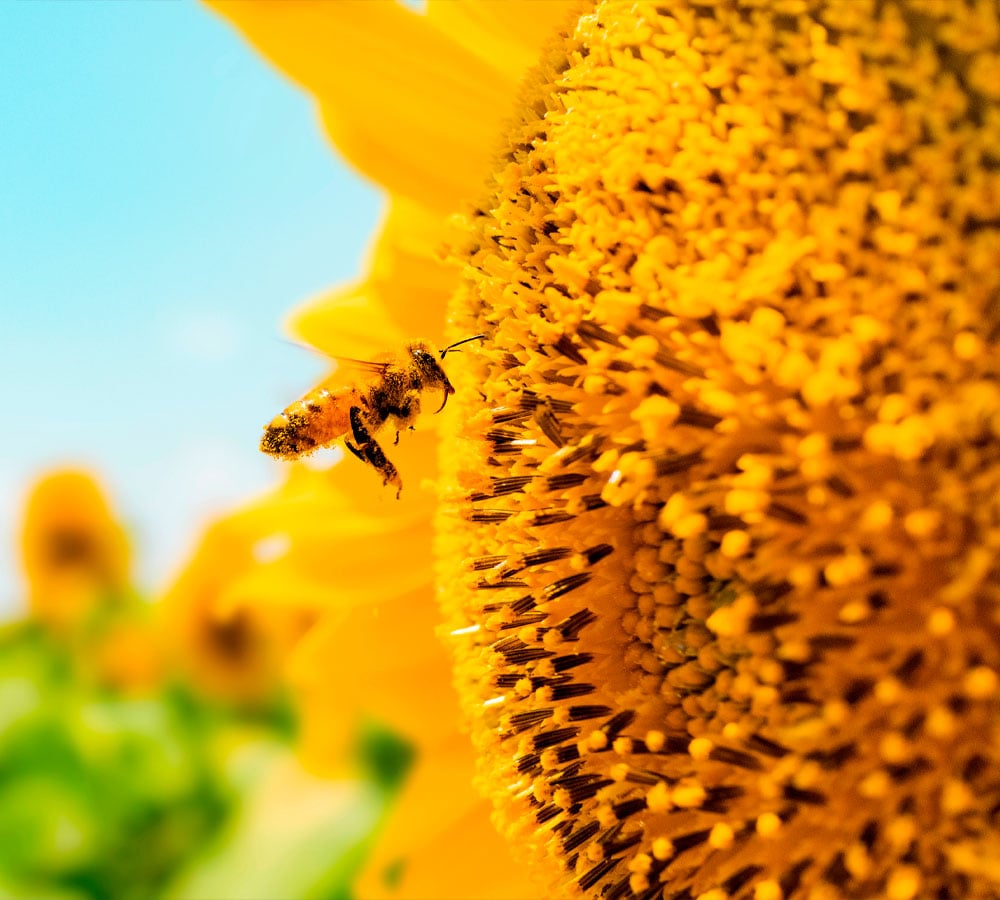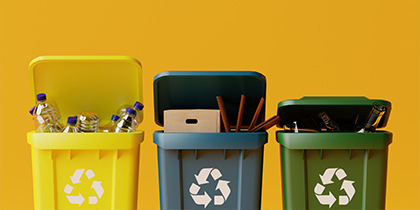How do you separate waste most effectively? Do you do it directly where it is generated (source separation) or have it sorted afterwards (post-separation)? This choice affects the cost of your waste management and the preservation of valuable materials.
In this blog, we list the differences and find out which approach can help your organization get more out of waste streams and save costs.
What is source separation?
With source separation, waste streams are separated directly at the point of origin. On the shop floor, this means that employees deposit different types of waste - such as paper, glass, organic waste and PMD - in separate collection containers. Because these streams are not mixed with residual waste, they remain suitable for high-quality recycling.
Take cardboard, for example: in a separate paper bin, it stays dry and can be reused as packaging material. If it ends up in the residual waste, it becomes contaminated with food residues, for example, which often makes reuse impossible. Properly separated waste therefore has a greater chance of being reused.
Advantages of source separation
Source separation provides companies with several advantages. Because less waste ends up in residual waste, the costs of incineration are reduced. Source separation also provides insight: because waste is collected per stream, it is clearly visible how much paper, glass or PMD is released. That insight is valuable for internal monitoring and reporting, but also for complying with legislation such as the CSRD. This requires companies to report on their waste streams, reduction targets and circular performance.
In addition, source separation helps meet legal standards for hazardous waste, such as the Eural list. By separating hazardous waste streams according to the correct codes, you avoid fines.
Disadvantages of source separation
Source separation requires efficient waste management setup. Consider placing the correct waste bins at logical locations within the company, where the waste stream is actually released. In addition, clear communication to employees is important: they must know which waste belongs in which bin, so that waste streams are separated correctly. Finally, additional collection equipment is needed to keep the various waste streams separate.
Read also

Afvalscheiden: handige instructieposters
What is post-separation?
In post-separation, waste streams are not separated on the shop floor, but afterwards in a waste treatment facility. The residual waste is sorted there by machine, where recyclable materials- such as plastic, metal and cardboard- are removed from the stream. For businesses, this means that all waste is deposited in one container, with no separate means of collection.
The pros and cons of post-separation
In some situations, post-separation can be a practical choice. For example, in locations where there is little space for multiple bins, such as in inner cities or near high-rise buildings. At the same time, this method also brings limitations. As mentioned earlier, materials become contaminated more quickly if they are not separated immediately, making high-quality recycling more difficult and resulting in more waste being incinerated. Post-separation also provides less insight into the composition of the waste, making it more difficult to measure performance or meet reporting requirements, such as the CSRD.
Milgro's position: source separation delivers the best results
At Milgro, we see source separation as the starting point. By separating waste streams directly, they remain suitable for high-quality reuse and raw material losses are prevented. This fits with our vision: waste is a raw material that has lost its way. By collecting materials in the right place, we help those raw materials find their way back into the chain - so they can be reused. Post-separation does not reach that level: because waste is collected mixed, many materials become contaminated and are often impossible to recycle.
An exception
For most waste streams, source separation is the best choice. Yet light packaging materials such as plastic packaging and cans are an exception to this. This is because in many companies these streams are released only in limited quantities. In that case, source separation is often not profitable: the amount of waste per emptying is too small to organize separate collection efficiently.
Getting started with waste separation at the source?
Milgro helps companies practically realize efficient waste separation at the source. We not only look at the waste streams, but also at the internal waste logistics. Are collection points logically arranged? Can employees easily separate?
We support the promotion of behavioral change and the redesign of separation points.
Stay informed
Stay up to date on all new developments? Follow us onLinkedIn, listen to the podcast 'Feedstock to Think' or subscribe to the newsletter. Are you curious about what Milgro can do for your operations and waste process? Then get in touch.














